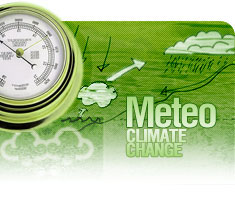http://search.japantimes.co.jp/rss/nn20101021a5.html
NAGOYA — The success or failure of U.N. conferences often hinges on whether delegates come to agreement after days or months — in some cases years — of intense haggling over a few numbers.
But at the COP10 talks in Nagoya, the numbers debate is of secondary importance to more basic issues that have no real quantitative solutions.
The 1997 Kyoto Protocol conference and the 2009 Copenhagen Accord conference went into overtime, with delegates, and in the case of Copenhagen, world leaders, meeting behind closed doors and arguing heatedly over by what percent the world should reduce its greenhouse gas emissions, by when it should reduce them, and how much money developing nations should receive to meet their own reduction goals.
Numbers are also being debated at the 10th Conference of the Parties of the Convention of Biological Diversity, especially in the areas of terrestrial and marine preservation targets for the next decade. But unlike Kyoto and Copenhagen, neither the streets of Nagoya nor the conference center are yet clogged with those arguing for one set or another.
The most contentious arguments in Nagoya center around not specific figures recommended by a vast majority of scientific experts, as was the case at Kyoto and Copenhagen, but on questions regarding the Convention on Biological Diversity's legal and moral responsibilities toward preservation and protection issues.
COP10 is currently debating a plan for biodiversity conservation targets over the coming decade that includes proposals to conserve 15 or 20 percent of terrestrial, inland water areas and a certain percentage of the world's marine areas. The discussions so far have been low key.
This is partially because COP10's main focus is on the adoption of a new protocol to ensure benefits derived from access to genetic resources are distributed fairly, not long term protection targets.
But it's also because there are deep practical difficulties facing countries in determining what percentage of their land and marine areas they can conserve without negatively affecting human lives.
"Originally, the global goal was at least 10 percent of all habitats by 2010. As time has gone by, though, with threats like climate change affecting the future disposition of species and where they migrate, we've realized we need to protect more ecosystems," said Trevor Sandwith, head of the International Union for the Conservation of Nature's global protected areas program.
"Countries have to look at this as a tradeoff between what they can afford to conserve for agriculture, water supply and fisheries, and their urbanization and industrial infrastructure development needs. But it's quite clear past targets were not enough," he said.
Only 1.17 percent of the oceans are protected, and there are 5,880 protected marine areas worldwide today, mostly in coastal areas, according to the IUCN. While some nations like Japan have announced they favor protecting 15 percent of the world's terrestrial and marine areas by 2020, others want higher or lower figures for marine areas, depending on the extent to which they rely on the world's oceans for food.
________________________________________
|



 Română
Română English
English


